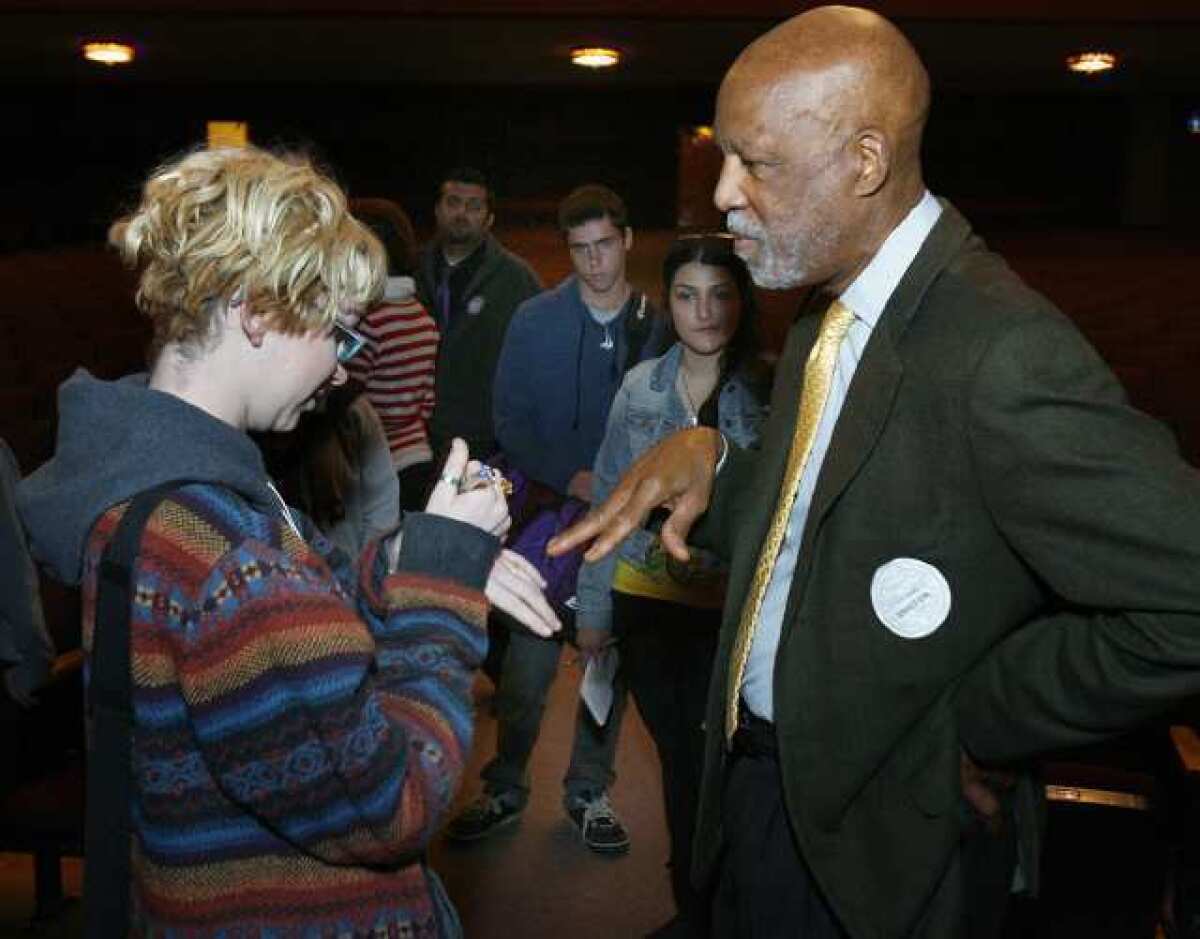Civil rights icon Terrence Roberts speaks at Hoover High

- Share via
A man who faced down violent crowds and antagonistic schoolmates amid the upheaval of desegregation in the American South encouraged students to be equally purposeful in their pursuit of an education during a visit to Hoover High School on Monday.
“You are all executives in charge of your own learning,” Terrence Roberts, a member of the Little Rock Nine, said. “You have brains. You have the capacity to earn ‘As.’”
Roberts was one of nine black students who in September 1957 began attending Little Rock Central High School in Little Rock, Ark., integrating a formerly all-white campus in a community where segregation was deeply entrenched. Photographs capturing the teenagers entering the school under military guard are some of the most iconic of the civil rights movement.
Speaking at Hoover during the school’s annual human rights assembly, Roberts recalled his decision to brave the furor.
“When you get in that sort of situation and you recognize the danger you have to make a decision, ‘Am I going to face the danger or run away from it?’” Roberts said. “The nine of us decided to stay in position to face the opposition. It wasn’t an easy thing to do.”
Just 15 years old at the time, he and his fellow black schoolmates were beaten daily. Fear was a constant companion.
“I have never been so afraid in my life,” said Roberts, now 70. “I didn’t think human beings could actually be that afraid without falling over and dying.”
Some white students developed techniques to harass the black students, including one that Roberts described as “hit-and-run.”
“I would walk down the hall with my guard, some kid would come up behind me and shove me down a flight of stairs or hit me with a baseball bat or spit on me or kick and then run,” Roberts said.
The guard would then have to decide whether to pursue the attacker, or stay with his charge. Roberts always asked the guard to stay with him, fearing that other students were nearby waiting to catch him alone.
The Little Rock Nine were aware that their presence in the school was about something much bigger than themselves, Roberts said.
“We were there not for ourselves,” Robert said. “It wasn’t about us. It wasn’t about our well being and our comfort — it was about speaking to the universe about the principals of good.”
Eight of the nine students made it through the year. Arkansas Gov. Orval Faubus then shuttered four Little Rock high schools for the 1957-59 school year in attempt to halt integration.
Roberts and his family relocated to Southern California. After graduating from Los Angeles High School in 1959, he went on to earn degrees at Cal State Los Angeles, UCLA and Southern Illinois University, and later established a psychology practice in Pasadena, where he is also a resident.
Now retired, Roberts commits most of his time to writing and travel. He also speaks to student groups about three times a month, he said.
One of the many things he took away from his year at Central High, Robert told his audience, is that not every white person was the enemy and that not every black person was an ally.
“You cannot color code the universe,” Roberts said. “You have to judge people based on who they are individually.”